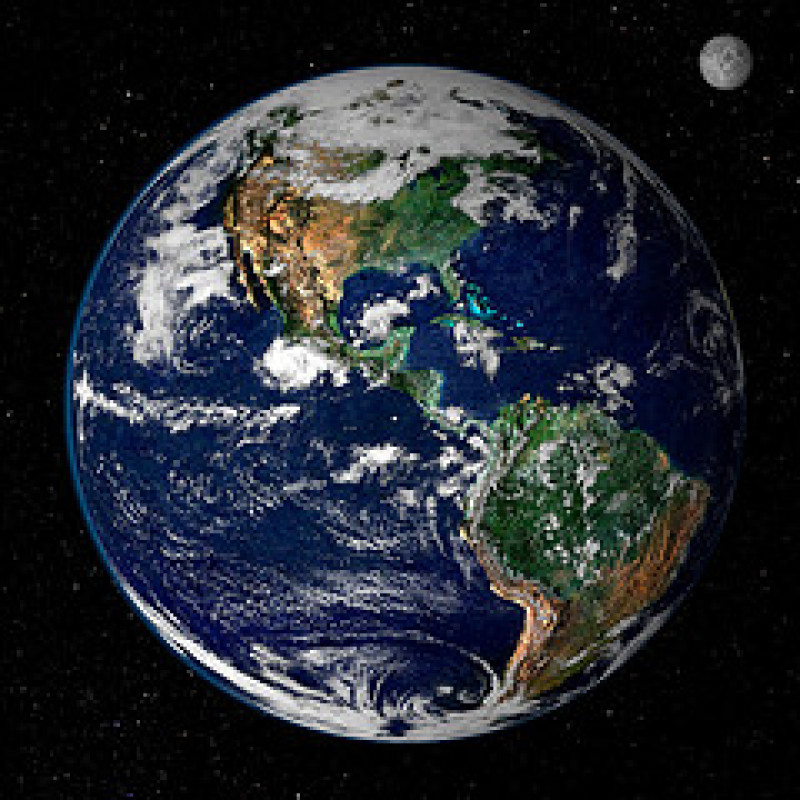
Cases of mass extinctions of animals and plants and the ongoing effects of climate change indicate that humans have pushed Earth's boundaries and have entered a danger zone, according to the findings of scientists, Reuters reported.
The recent study shows that four out of nine planetary boundaries have already been breached due to human activities. These boundaries indicate the planet's safety limitations for human use.
For the study, the researchers used a report from 2009 and updated it with new information regarding the environmental effects of human activities.
According to researchers, certain factors such as extinctions and greenhouse gas emissions have exceeded the allowed levels for the boundaries.
"I don't think we've broken the planet but we are creating a much more difficult world," one of the study's co-authors and member of the Stockholm Resilience Center Sarah Cornell told Reuters.
Due to man-made factors such as deforestations, pollution and excessive hunting, the rate of various types of animals and plant-life has increased and surpassed the safety levels by 10 to 100 times.
As for carbon emissions, the boundary is set at 350 parts per million. However, based on the study, Earth is now experiencing an emission of 397 parts per million due to the ongoing use of fossil fuels since the Industrial Revolution in 1750.
The scientists warned that if humans continue to violate the boundaries through environmentally-harmful activities, this could lead to the development of inhospitable conditions on Earth.
"Transgressing a boundary increases the risk that human activities could inadvertently drive the Earth System into a much less hospitable state," Will Steffen of the Australian National University and lead author of the study said according the Daily Mail.
Steffen added that the study highlights the immediate impact of humans on Earth's environmental condition.
"It is difficult to overestimate the scale and speed of change," he said. "In a single lifetime humanity has become a planetary-scale geological force."
Scientists warned that the rate of global sea level rise has been overestimated, Science Daily reported.
This means ocean levels are rising at a much faster rate over the past two decades compared to the previous predictions by scientific organizations.
Harvard University scientists Carling Hay and Eric Morrow came up with this surprising finding after reviewing past sea level rise estimates from 1900 to 1990.
Back then, ocean levels were predicted to rise by 1.5 to 1.8 millimeters every year. However, during those decades, Hay and Morrow said ocean levels actually rose by an average of 1.3 millimeters annually.
The problem, however, as pointed out by Morrow, is that current projections are based on the 1900 to 1990 estimates. Based on these data, it was agreed that the sea level has increased by 3 millimeters annually over the past two decades.
Since the sea level rise has been overestimated, the 3-millimeter increase can no longer be considered an accurate prediction.
"Another concern with this is that many efforts to project sea-level change into the future use estimates of sea level over the time period from 1900 to 1990," Morrow said in a statement.
"If we've been overestimating the sea-level change during that period, it means that these models are not calibrated appropriately, and that calls into question the accuracy of projections out to the end of the 21st century," he continued.
For the years following 1990, the scientists turned to computer models and satellite data to gather a more accurate prediction. These methods are certainly more complex compared to the previous practice of using yard sticks to gather average measurements of rising ocean tides.
"Our estimates from 1993 to 2010 agree with [the prior] estimates from modern tide gauges and satellite altimetry, within the bounds of uncertainty," Hay told the BBC. "But that means that the acceleration into the last two decades is far worse than previously thought."
Morrow and Hay attributed the rise in sea levels to the changing ocean patterns and present-day effects of global warming.



















